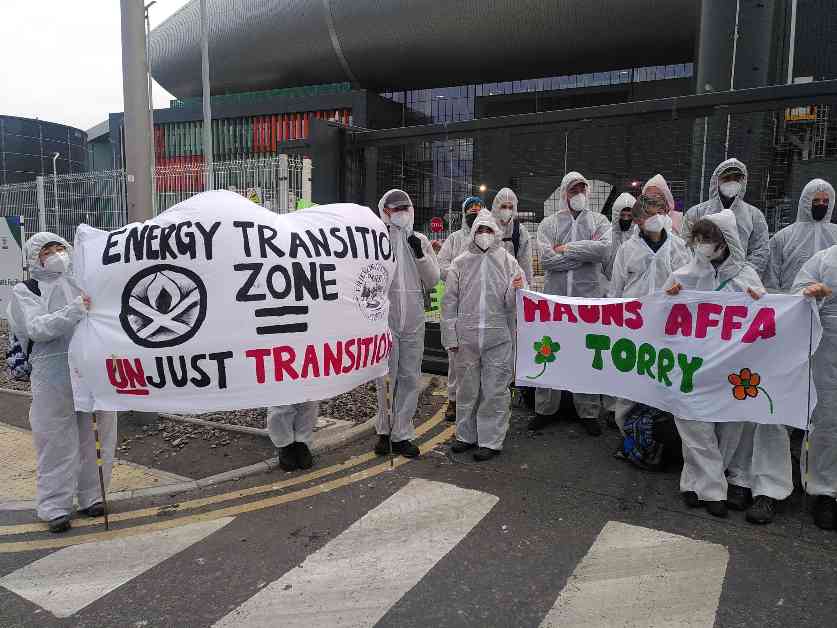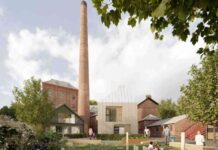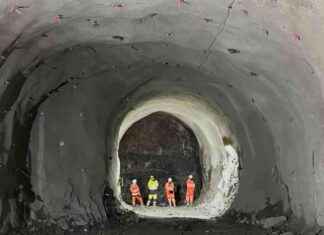Campaigners in Aberdeen are gearing up for another round in their fight against the development of St Fittick’s Park, with a court date looming on the horizon. This battle has been ongoing for more than four years, with local residents in Torry steadfastly resisting the proposed industrial development that threatens to encroach upon their only publicly accessible green space.
Background of the Fight
Torry, one of Aberdeen’s most deprived neighborhoods, has been at the center of this contentious issue. The proposed industrial park, backed by not-for-profit company EZT Ltd and prominent energy tycoon Ian Wood, aims to use part of St Fittick’s Park for the construction of industrial facilities adjacent to Aberdeen South Harbour. This move has been met with strong opposition from the community, who argue that the park holds significant value as a green oasis in an otherwise urban setting.
The conflict came to a head last September when Aberdeen City councillors voted to explore leasing part of the site for industrial purposes. This decision sparked outrage among campaigners, who raised concerns about the lack of a proper equalities impact assessment and other procedural irregularities. In response, Glasgow-based Govan Law Centre lodged a legal challenge to contest the decision, ultimately leading to a court hearing before Lord Fairley.
The Court’s Verdict
Following the legal challenge, Lord Fairley delivered a ruling on the 7th of August, denying the campaigners’ petition on the grounds that the local authority did not breach the Equality Act. Despite this setback, the campaigners remained resolute in their determination to protect St Fittick’s Park from industrialization. Richard Caie, a member of the Friends of St Fittick’s Park, expressed the group’s unwavering commitment to the cause, stating, “We are dismayed but not discouraged. We will continue to oppose the industrialization of the community’s beloved Park by all legal means.”
With the court ruling failing to sway the campaigners, the fight to preserve St Fittick’s Park is far from over. Govan Law Centre announced plans to lodge a reclaiming motion (appeal) with the Inner House of the Court of Session in the case of McLean v. Aberdeen City Council. This legal maneuver aims to challenge the policy decision made by Aberdeen City Council to proceed with negotiations for the development of the park for industrial purposes.
Continuing the Battle
As the legal battle continues to unfold, the stakes remain high for those invested in preserving St Fittick’s Park. The case has garnered significant attention and support from environmentalists, community activists, and concerned residents who view the park as a vital green space that should be protected from commercial interests.
The fight over St Fittick’s Park serves as a microcosm of larger debates around urban development, environmental conservation, and community empowerment. It highlights the tensions that arise when local authorities prioritize economic interests over the well-being of their constituents and the preservation of natural spaces.
In the face of mounting challenges and legal obstacles, the campaigners remain undeterred in their efforts to safeguard St Fittick’s Park for future generations. Their dedication to this cause speaks to the enduring importance of green spaces in urban environments and the need to protect them from encroaching development pressures.
As the upcoming court date approaches, all eyes will be on Aberdeen as the fate of St Fittick’s Park hangs in the balance. The outcome of this legal battle will not only impact the residents of Torry but also set a precedent for how communities can assert their rights to protect their local environment from unwanted industrialization.
In conclusion, the Stop Aberdeen Park Development campaign is a testament to the power of grassroots activism and community solidarity in the face of formidable challenges. The fight to preserve St Fittick’s Park is far from over, but the campaigners remain steadfast in their resolve to protect this cherished green space for current and future generations.
































